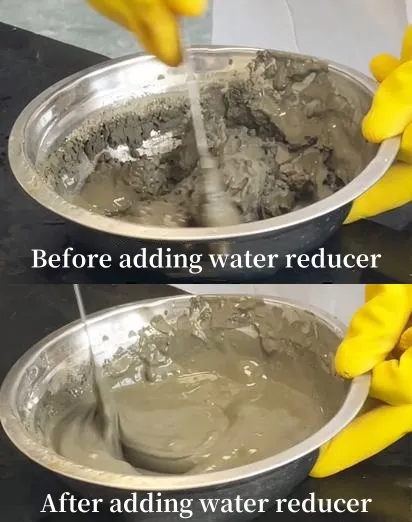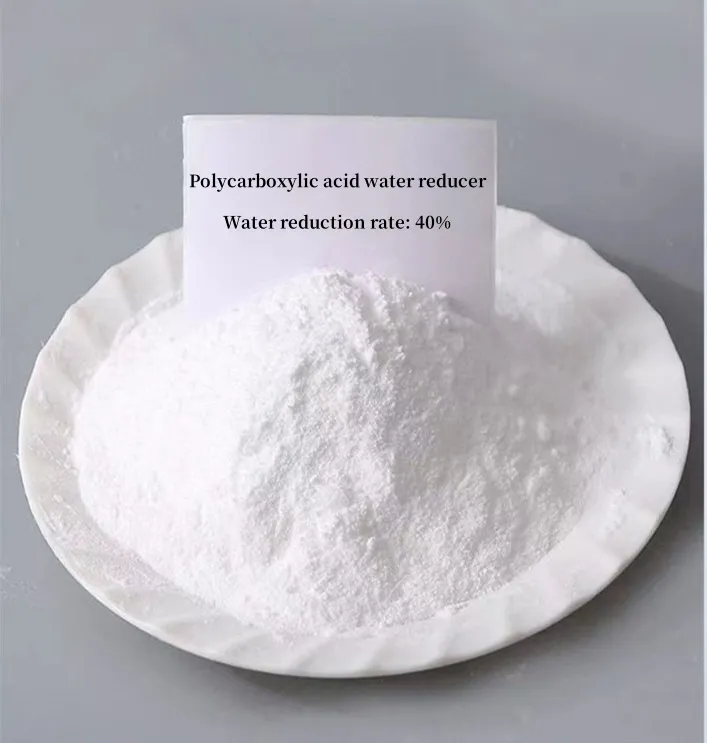
Water Reducing Admixtures: Enhancing Concrete Quality with Polycarboxylate Technology
Exploring the Types of Water-Reducing Admixtures
In modern concrete technology, water-reducing admixtures are critical components that enhance the performance of concrete by lowering water demand while maintaining or improving workability. There are several types of water-reducing admixtures that engineers and contractors use depending on project requirements:
Low-range water-reducing admixtures (Plasticizers): Suitable for general applications where a small reduction in water content is needed.
Mid-range water-reducing admixtures: Used in residential and commercial projects for moderate water reduction and improved slump retention.
High range water reducer concrete (Superplasticizers): Essential for high-strength, self-consolidating concrete (SCC) and intricate formworks.
An advanced innovation in this field is the polycarboxylate admixture, which belongs to a new generation of high-performance superplasticizers.

Polycarboxylate Ether Superplasticizers: The Future of Concrete Admixtures
The Role of Polycarboxylate in Concrete
Polycarboxylate ether superplasticizer (PCE) has revolutionized the construction industry with its superior water-reducing capabilities and excellent workability retention. These PCE based admixtures disperse cement particles effectively, allowing concrete to flow easily while using less water.
Builders increasingly choose polycarboxylate for high-rise buildings, precast elements, and infrastructure projects where strength, durability, and smooth finishes are critical. Polycarboxylate superplasticizer powder is also available for easy transport and use in various environments.

Cement and Concrete Water Reducers
Using a cement water reducer veya concrete water reducing admixture ensures a denser, more durable concrete matrix. These admixtures reduce shrinkage, improve surface finishes, and enhance long-term strength. Water reducing agent in concrete applications range from floors and pavements to bridges and tunnels where performance is paramount.
Cost is a key consideration for project planners. The polycarboxylate superplasticizer price depends on factors such as molecular design, purity, and regional supply chains, but it often provides long-term savings by improving concrete quality and reducing material waste.
How Water-Reducing Admixtures Work in Concrete
Water reducer admixtures work by altering the surface properties of cement particles. They disperse the particles evenly through mechanisms like electrostatic repulsion and steric hindrance. This results in a reduced need for water to achieve the desired consistency, leading to high-strength concrete with enhanced durability.
An example of water reducing admixture is lignosulfonates (low-range), melamine sulfonates (mid-range), and polycarboxylate ether (high-range). Among these, polycarboxylate admixture products are considered the most efficient and environmentally friendly due to their low dosage requirements and high performance.
Superior Concrete Solutions with Polycarboxylate Admixtures
From standard water reducing agents in concrete to cutting-edge polycarboxylate superplasticizer powder, these admixtures are transforming the way modern concrete is designed and applied. The choice between types of water-reducing admixtures depends on project needs, but advanced solutions like PCE based admixture ensure superior strength, flowability, and sustainability.
Whether you’re exploring the polycarboxylate superplasticizer price for large-scale infrastructure or seeking a cement water reducer for residential projects, understanding these products enables smarter, more efficient concrete practices.
FAQs About Water-Reducing Admixtures
What are the types of water-reducing admixtures used in concrete?
The types of water-reducing admixturesinclude low-range (plasticizers), mid-range, and high-range (superplasticizers), such as polycarboxylate-based products.
Why is polycarboxylate admixture preferred for high-performance concrete?
Polycarboxylate admixtureprovides superior dispersion, high water reduction, and excellent slump retention, making it ideal for advanced concrete mixes.
What is a polycarboxylate ether superplasticizer?
A polycarboxylate ether superplasticizer(PCE) is a high-range water reducer that improves concrete flowability and strength at low water-cement ratios.
How does a water reducer admixture work in concrete?
A water reducer admixturedisperses cement particles, reducing water demand and improving the concrete’s density, strength, and workability.
What affects the polycarboxylate superplasticizer price?
The polycarboxylate superplasticizer pricedepends on factors like polymer type, dosage efficiency, and market supply.
-
Hydroxypropyl Starch as a Sustainable Construction AdditiveNewsNov.24,2025
-
The Gelation Properties of CMCNewsNov.21,2025
-
Redispersible Latex Powder and Water Retention CapacityNewsNov.21,2025
-
Dosage Control for Polycarboxylate Water ReducerNewsNov.21,2025
-
Film-Forming Properties of Polyvinyl AlcoholNewsNov.21,2025
-
The Function of Gypsum Additives in MortarNewsNov.21,2025





















